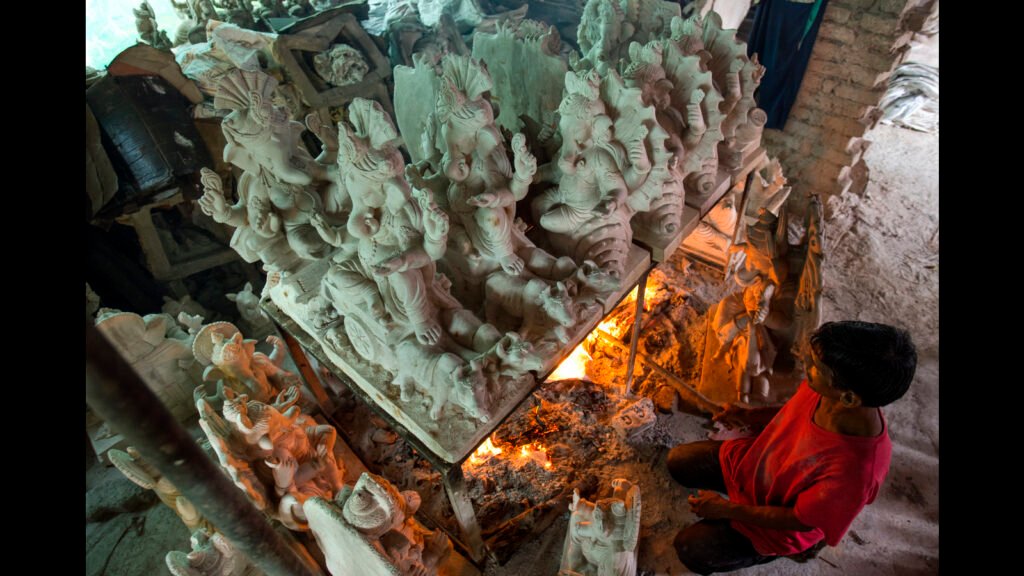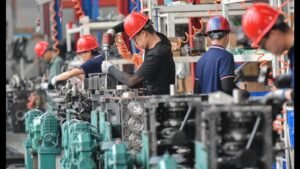
Over the past decade, India has witnessed an increase in bot the intensity and frequency of heatwaves. The India meteorological department (imd) estimates that summer 2025 is likely to be hotter for most parts of North, East, and Central India Than the rest of the country. The Soaring Temperatures Present A Growing Threat to the Health and Productivity of Over 20 Crore MSME WORKERS, Who Work in Conditions that have Little Scope for Regulating Temperatures. Outdoor Workers, In Sector Such as Agriculture, Vending, and Construction, Are Considered the most vulnerable. However, Indoor Working Conditions in Industries Such as Forging, Foundries, and Textiles are often overlooked.

Contrary to the Common Belief, Indoor WorkSpaces are not Always Immune to Heat Risks – Most Manufacturing MSME UNITS ARE heat traps. They tend to operate in metal-roofed buildings with little or no insulation, inadequate ventillaration, and virtually no cooling systems. In Textile Processing Mills, Machines Such as Boilers, Dyeing Vats, Or Presses Generate Additional Heat, Compounding The Effects of Already High Ambient TEMPERTURES, Creating Stifling Stifling Working CONDITIONS. The impact of heat stress on Indoor Industrial Workers is not just physical, it is economy and social. Most works in the msme sector are informally employed, with limited access to Occupational Health and Social Protection, and hence tend to prioritise their jobs over health and safety considifications.
Health Experts Warn that Prolonged Exposure to High Temperatures Increase The Risk of Heat Exaha, Dehydration, or even fatal heatstroke. India Witnessed A Number of Suspected Heatstroke Deaths in 2024, but granular information is missing. Studies show that at temperatures of 38 ° c or higher, productivity losses can be as high as 62%. A report by the International Labor Organization (ILO) Projects that India Cold Lose Over 34 Million full-time jobs annual by 2030 du due to heat-inductivity loss, Particularly in Sectors Like Agriculture, Mining, and Manufacturing.
Beyond Impacting Productivity, Heat Stress Contributes to a Rise in Workplace Accidents, Higher Absentieism, and low Employee Turnover. These, in turns, affect the profession and operateal continuity of msmes. India Lost $ 159 Billion, Equivalent to 5.4% of its GDP, In the Service, Manufacturing, Agriculture, and Construction Sector, Dude to Extreme to Extreme to Extreme Heat in 2021 with Labor PRODUCED WORKED hours.
Solving Heat Stress in India’s MSMES Calls for Pragmatic, Low-COST, And Scalaable Interventions that can be implemented by employers with limited resources. Employers can take immediative steps to provide relieve to workers by making small investments Systemic shifts like Scheduling Breaks during the hottest time of the day and rotating works Simple modifications to infrastructure by installing exhaust fans, planting greenbelts or shades outside sun-facing walls, and investing in cool-roof technolgies can reduce Absorption. These interventions are relatively low-cost and are being piloted in some industry clusters with promising results. Structural interventions like cooling centers can offer life-serving respite during heat-induced illnesses.
While many City and State Governments Have Drafted HEAT Action Plans (Haps), They Seldom Detail The Hazards for Indoor Workers. Kerala has recently tested adjusting work shifts in their hap to avoid working during pedot hours, whil ahmedabad suggessts shift adjustment as a posesible strategy to reduce stress on work. Most of these plans include short-term reactive measures raather than proactive long-term solutions.
Most Government Advisories Adopt a One-Size-Fits-All Approach, Failing to differentiate Between Occupations and Industries with Vastly Different Exposure Profiles. For example, textile workers and brick-kiln labourers face heat stress in unique ways, Requiring Targeted solutions. Without Granular Occupational Guidance, these workers continue to fall through policy gaps. District or City Authorities Could Strengthen Haps by Tailoring Advice to different Occupations. Haaps need to better target indoor works and integrate them into urban planning, labore regulations, and health systems.
Finally, Policymakers Need to Acknowledge Indoor Heat Stress as an Occupational Hazard and take steps to address this. This should mean updating the evcipational safety codes to include maximum allowable temperature for indoor work, recognizing the impact of wet bulb templates (reflects the effect of humanity Health, and recommending emergency measures like shutdowns Above a certain threshold limit. Enforcement of Active and Passive Ventulation and Cooling Standards in Workplaces BE Strengthed, Potentially Tying Compliance to Inscents and Fiscal Measures.
As India’s manufacturing Ambitions face the harsh realities of the climate crisis, Protecting Workers from Heat Stress is a Moral and Practical Imperative. Thoughtful Policies, Innovative Cooling Solutions, and Multi-STAKEHLDER Collaboration Between Private Sector and Governments is Needed to Beat the Heat the Heat in India’s MSMEs.
Bhawna Ahuja is Program Manager, and Ananya Chakraborty is Senior Program Research Specialist, Climate Resilience Practice, Wri India. The views expressed are personal
Co-Authored with Anjana Rajagopalan, Program Manager, Climate Resilience Practice, Wri India.




